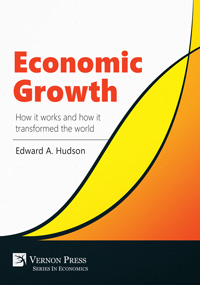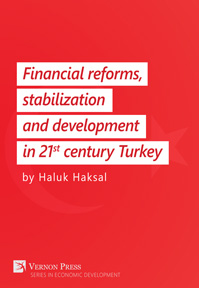Financial Innovation: Theories, Models and Regulation
by G. V. Satya Sekhar (Gitam University, India)
Purchase this book
(click here to change currency)
This book is quite informative to the researchers and analysts in the area of finance. It gives a broad idea on genesis, progress and depth of research conducted in financial innovation, theories, models and regulations.
Dr. MSV Prasad,
Head- Dept of Finance, GITAM University, India
The consequences of the global financial crisis still affect the economies of many countries. And to prevent possible crises in the future, new tools and approaches in the implementation of financial transactions and services are needed. All of them can be combined under the topic of financial innovation. That is why the new book by Dr. G. V. Satya Sekhar that is dedicated to financial innovation is relevant.
Although modern financial innovation is underpinned by a rich literature, the new book by Dr. Sekhar good corresponds to the need to provide an integrated study on financial innovation and the economic regulatory mechanism. A key part of financial innovation covered in this book is the process of creating innovative financial securities and derivative pricing that offers new pay-offs to investors. It also covers a selection of empirical studies corroborating financial innovation theories. In addition it exposes myths surrounding performance evaluation models.
This book consists of six chapters. They cover key topics on the application of financial innovation, the theories that underpin financial innovation practice, a usage of technology for financial modeling, the relationship between financial innovation and the wider economic system, the place of financial innovation in the global financial system, and a comparative analysis of India and the United States.
Professor Dr. Anatoliy G. Goncharuk
International Humanitarian University, Ukraine
(Extract from a review appearing on the 'Journal of Applied Management and Investments (JAMI)', Vol 7, Num. 1, Winter 2018)
Financial innovation is a regular feature of the global financial system. Financial innovation results in greater economic efficiency over time. In the process of creating a new financial product, besides basic theory of financial management, a financial engineer needs to acquire knowledge of optimization and financial modeling techniques. Modern financial innovation is underpinned by a rich literature including the seminal studies by Levich (1985), Smith, Smithson, and Wilford (1990), Verghese (1990), Merton (1992), Levine (1997), John D Finnerty (2002), Tufano (2003) and Draghi (2008), among many others. This book corresponds to the need to provide an integrated study on financial innovation and the economic regulatory mechanism. A key part of financial innovation covered in the book is the process of creating innovative financial securities and derivative pricing that offers new pay-offs to investors. The book also covers a selection of empirical studies corroborating financial innovation theories. It also exposes myths surrounding performance evaluation models.
This book is presented in six chapters. The first chapter outlines important considerations on the application of financial innovation theories. The second chapter presents the theories that underpin financial innovation practice. The third chapter focuses on use of technology for financial modeling. The fourth chapter identifies the relationship between financial innovation and the wider economic system. The fifth chapter discusses the place of financial innovation in the global financial system. The sixth and final chapter presents a comparative analysis of India and the United States.
CONTENTS
CHAPTER-1: FIRST STEP TO INNOVATION
1.1. Introduction
1.2. Need for Financial Innovation
1.3. Review of Literature
1.4. Types of Innovation
1.5. The Tools of Financial Innovation
1.6. Factors contributing to the growth of financial engineering
1.7. Pioneers of Finance Theory
1.8. Summary
CHAPTER-2 THEORERMS AND THEORIES OF FINANCIAL INNOVATION
2.0. Introduction
2.1. Modigilani Miller Theorem
2.2. Markowitz Theorem
2.3. Black Scholes Merton’s Option Pricing Theorem
2.4. Garman and Kohlhagen Theorem
2.5. Ross Theory
2.6. Wuyangru Theory
2.7. Irving Fisher’s theory
2.8. Scalar’s Theorem
2.9. Models and Mechanism of Financial Innovation
Appendix- Basic Mathematical Tools for Financial Innovation
CHAPTER -3: FINANCIAL MODELLING AND APPLICATON OF SOFTWARE PACKAGES
Structure
3.1. Financial Modeling
3.2. Breaking Down 'Financial Modeling'
3.3. Users of Financial Models
3.4. Applications of Financial Modeling
3.5. Financial Modelling Status
3.6. Wolfram Solutions
3.7. Financial Product Mark Up Language (FPML)
3.8. Summary
CHAPTER- 4: THE GLOBAL FINANCIAL SYSTEM
4.1. Introduction
4.2. Recent Changes in global financial markets
4.3. Financial Management and domestic management
4.4. Emerging challenges in India
4.5. Evolution of International financial avenues
4.6. Domestic and Offshore Market
4.7. International Financing Decision
4.8. International Business Methods
4.9. IMF role in shaping global economy
4.10. Country Risk Assessment
4.11. Summary
CHAPTER- 5: FINANCIAL INNOVATION AND ECONOMIC SYSTEM INTERLINKS AND GAP ANALYSIS
5.0. Introduction
5.1. Financial Innovation
5.2. Definitions
5.3. Motivational factors
5.4. Need for financial innovation
5.5. Financial System
5.6. Economic instability and financial crisis
5.7. Securitization and innovation
5.8. Reforms in financial sector
5.9. Indian financial system pre-reforms phase
5.10. Financial Sector Reforms in India
5.11. Financial legislative structure
5.12. Summary
CHAPTER-6: FINANCIAL REGULATROY MECHANISM –INDIA AND THE UNITED STATES
6.1. Introduction
6.2. Nationalization of Financial Institutions in India
6.2.1. Starting of Unit Trust of India
6.2.2. Establishment of Development Banks
6.2.3. Institution for Financing Agriculture
6.2.4. Institution for Foreign Trade
6.2.5. Institution for Housing Finance
6.2.6. Stock Holding Corporation of India Ltd
6.2.7. Mutual Fund Industry
6.2.8. Venture Capital Institutions
6.2.9. Credit Rating Agencies
6.2.10. Multiplicity of Financial instruments
6.2.11. Legislative Support
6.3. SEBI-Market Regulator
6.3.1. SEBI- Historical Background
6.4. Regulation of the Indian securities market
6.5. Guidelines Relating to Initial Public Offers in India
6.6. Promoter’s contribution In India
6.7. Eligibility Norms for Promoter’s contribution in India
6.8. Lock-in Requirements in India
2.9. Prospectus Requirements of companies in India
6.10. Powers of the SEBI
6.11. Global Depository Receipts(GDR) / American Deposit Receipts (ADR) / Foreign Currency Convertible Bonds (FCCB)
6.12. Financial Regulatory Mechanism in the United States
6.13. Summary
Dr. G. V. Satya Sekhar (M.Com, MBA, M.Phil, Ph.D, Associate Professor, Centre for Distance Learning, GITAM University, Visakhapatnam, India) has 20 years of teaching and research experience. He has published 35 articles in various national and international journals as well as seven books: 1. Management Information Systems, 2. Managerial Economics 3. Business Policy and Strategic Management, 4. Performance Appraisal of Indian Mutual Funds, 5. Strategic Financial Management, 6. The Indian Mutual Fund Industry and 7. The Management of Mutual Funds.
Financial Innovation, Financial engineering, Financial Modeling, Financial regulation, banking, financial instruments, valuation of stocks, measuring performance of financial instruments, fund management, economic regulations, global finance, regulation of stock exchanges
See also
Bibliographic Information
Book Title
Financial Innovation: Theories, Models and Regulation
ISBN
978-1-62273-317-0
Edition
1st
Number of pages
154
Physical size
236mmx160mm

![Financial Innovation: Theories, Models and Regulation [Hardback]](/file/4951/bb227bfdbb14607fbab9c23d81daa229/1509444015.jpg)






